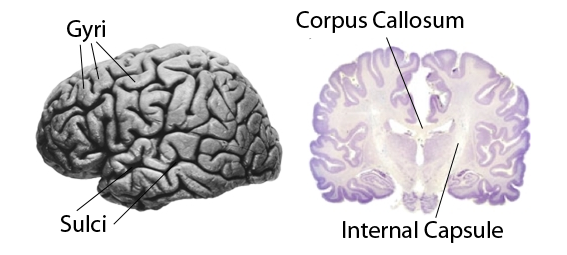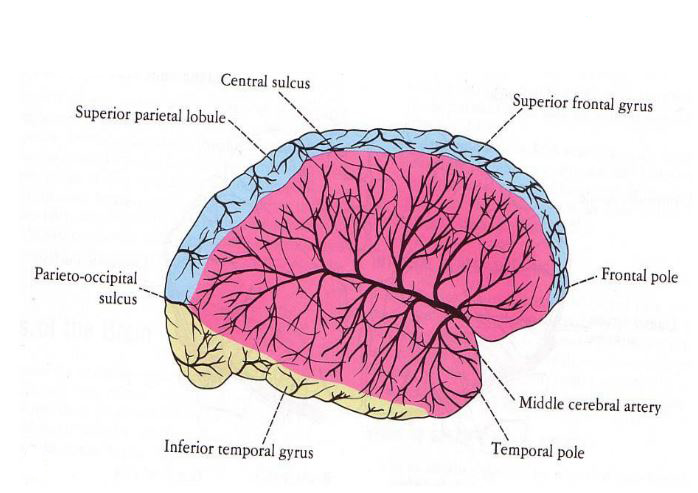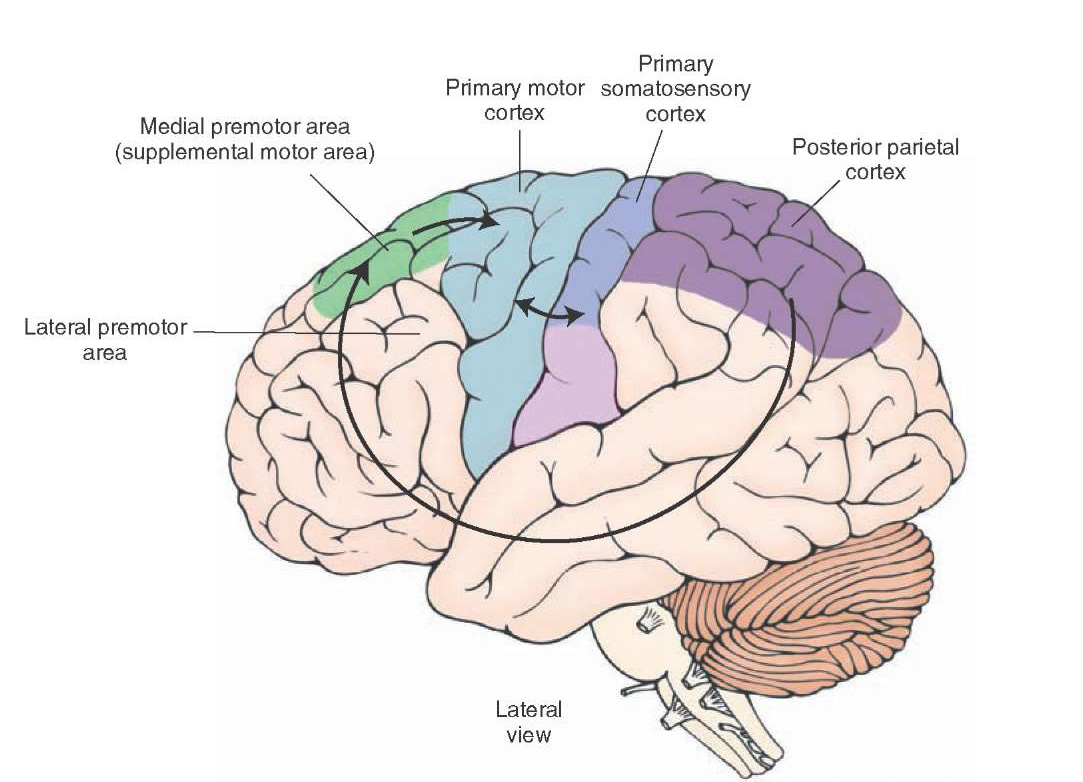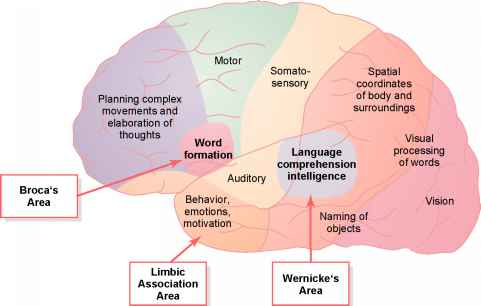The Human Brain
Many Images can be enlarged by clicking them. - Top
- The Main Motor Pathway
- The Motor Cortex
- Bulbospinal Pathways
- The Pre-Motor Cortex
- Projections to Pre-Motor Areas
- Tutorial Index
The Cortico-spinal (Pyramidal) Tract
| The Corticospinal Tract |
|---|
| The main pathway by which voluntary movements are executed is the corticospinal tract (CST). |
| The CST begins in the pre-central gyrus of the cerebral cortex; these pyramidal cells have axons that pass along the length of the CNS to the motoneurones in the ventral horn of the spinal cord. |
| The CST crosses the midline in the pyramids of the medulla: as a consequence, the left side of the brain controls movements of the right side of the body. |
| A small minority (~10%) of CST axons pass down the medial part of the anterior columns of the spinal cord before crossing the midline. They control proximal muscles in the limbs. |
| Within the brain, the CST passes through the Internal Capsule - between the basal ganglia and the thalamus. |
| The Internal Capsule is supplied with blood by the middle cerebral artery; when this artery becomes damaged, the contralateral side of the body becomes weak or paralysed (as in a stroke). |
The Motor Cortex.
| The Motor Cortex |
|---|
| The motor cortex (the pre-central gyrus) contains an orderly map of all the possible movements of the opposite side of the body arranged in order; electrical or magnetic stimulation of each small area of motor cortex causes contractions of groups of muscles responsible for a specific movement. |
| Stimulation of each area within the somatotopic map induces contractions of relevant muscle groups rather than of individual muscles. |
| The corticospinal tract is the executive pathway in the control of voluntary movements, and connects the motor cortex with alpha motoneurones. |
| Note that movements of the head and face are controlled by the lateral section of the pre-central gyrus. |
| The central section of the precentral gyrus controls the upper limb, and a disproportionately large area of motor cortex is involved in controlling movements of the hand and fingers. |
| The medial part of the precentral gyrus (including the section on the medial side of the hemisphere) controls the trunk and lower limbs |
| The motor homunculus is an image of the areas of motor cortex given over to movements of each part of the body |
| The prehensile thumb of primates has an especially large repertoire of movements, and a very large area of motor cortex is devoted to the control of hand movements. |
| The muscles of the face also have a disproportionate representation on the cortex; this is partly associated with the muscles of facial expression, but also with the muscles of the jaw and others involved in swallowing. |
| The motor cortex and cortico-spinal tract are particularly concerned with producing fine, precise movements. Lesions of the motor cortex (such as the surgical ablation of one area) lead to paralysis or a loss of power in the muscles affected. In time, these muscles can regain some movement, but the movements are always coarse in comparison. |
| The corticospinal tract is also called the pyramidal tract because it crosses the midline in the pyramids of the medulla. The term 'extrapyramidal' refers to pathways that can cause coarser movements, mediated by other pathways. |
| The pyramidal tract, originating in the motor cortex, is sometimes referred to as the 'upper motoneurone' by clinicians. This is in contrast to the 'lower motoneurone' - i.e. the alpha motoneurones - as it is useful to distinguish between these two groups of neurones when muscles become paralysed. |








